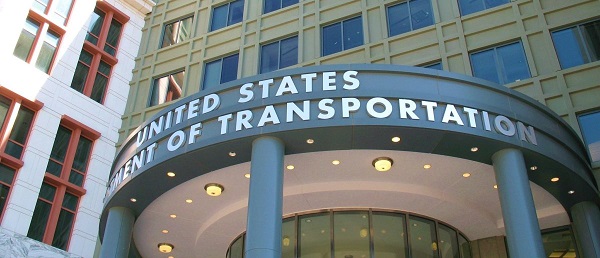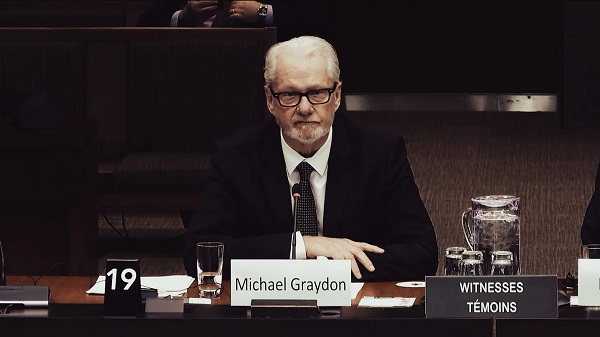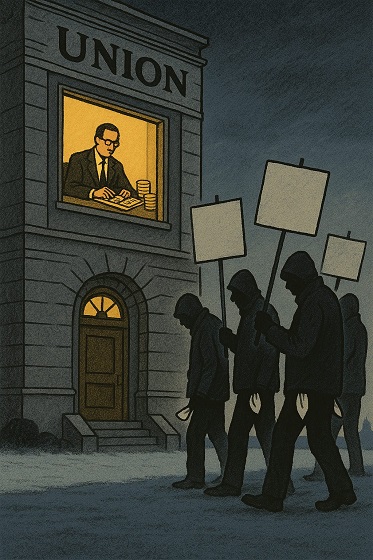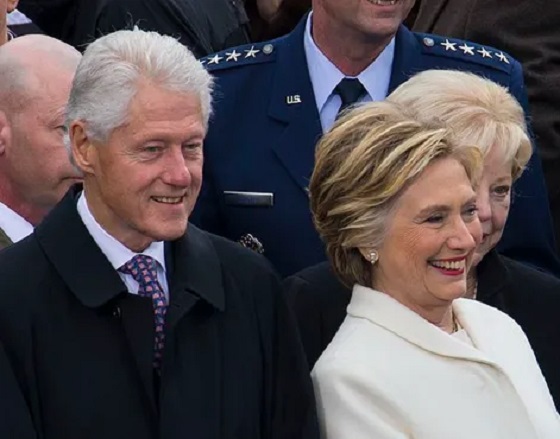Uncategorized
DOJ’s Whitaker says Russia probe ‘close’ to being completed

WASHINGTON — The special counsel’s Russia probe is “close to being completed,” the acting attorney general said in the first official sign that the investigation may be wrapping up.
Acting Attorney General Matthew Whitaker’s comments Monday were a departure for the Justice Department, which rarely comments on the state of the investigation into whether President Donald Trump’s campaign
“The investigation is, I think, close to being completed,” Whitaker said Monday at the end of an unrelated news conference in Washington. He said he had been “fully briefed” on the probe.
Whitaker did not elaborate or give any timetable for the end of a nearly two-year investigation that has shadowed Trump’s presidency.
So far, special counsel Robert Mueller has charged 34 people, including several close to the president. But he has yet to accuse anyone close to the Trump campaign of conspiring with the Kremlin to hurt Democrat Hillary Clinton and help Trump win the election.
Whitaker, who is seen as a Trump ally, took over the Justice Department — and oversight of the Mueller probe — after Jeff Sessions resigned as attorney general in November at Trump’s request.
Whitaker has drawn criticism for not recusing himself from the Russia investigation, even though he has publicly criticized it in the past. A top Justice Department ethics official advised him to step aside out of an “abundance of caution,” but Whitaker declined to do so.
According to Justice Department regulations, Mueller has to provide a report to the attorney general at the conclusion of his investigation laying out his prosecution decisions.
But it’s unclear what form the report will take or whether it will be released publicly.
And depending on when Mueller wraps up, the report may not go to Whitaker. Trump has nominated William Barr to serve as the next attorney general. His confirmation hearing was held this month and he’s awaiting a vote in the Senate.
Barr told the Senate Judiciary Committee earlier this month that he wants to release as much information as possible about Mueller’s findings, but he has hedged on specifics.
Trump has slammed the Russia investigation as a “witch hunt” and says there was no collusion.
The evidence so far shows that a broad range of Trump associates had Russia-related contacts during the 2016 presidential campaign and transition period, and several lied about the communication. Those contacts, according to Mueller’s indictments and U.S. intelligence agencies, occurred while the Russian government carried out a multifaceted effort to influence the 2016 presidential campaign and attempt to sway it Trump’s way.
On Friday, longtime Trump confidante Roger Stone became the sixth Trump associate to be charged by Mueller.
The others are Trump’s former national security adviser, his campaign chairman, his former personal lawyer and two other campaign aides.
Stone faces a Tuesday morning arraignment in federal court, where he is expected to plead not guilty to charges that he lied to lawmakers, engaged in witness tampering and obstructed a congressional investigation into possible
Though most defendants facing charges tend to stay quiet for fear of inflaming prosecutors or a judge, Stone has opted for a different tack since his pre-dawn arrest Friday.
Stone staged an impromptu news conference outside a Florida courthouse, made the rounds on weekend television interviews and mocked the probe on Instagram, posting a cartoonish image of Mueller holding a “nothingburger” — just a hamburger bun with no meat.
Also Monday, a judge delayed the sentencing of Trump’s former campaign chairman Paul Manafort in Virginia after he was convicted of eight financial crimes last year.
The sentencing is being delayed as a judge in Washington decides whether Manafort intentionally lied to investigators.
___
Associated Press writer Eric Tucker contributed to this report.
Michael Balsamo And Chad Day, The Associated Press
Uncategorized
Cost of bureaucracy balloons 80 per cent in 10 years: Public Accounts

The cost of the bureaucracy increased by $6 billion last year, according to newly released numbers in Public Accounts disclosures. The Canadian Taxpayers Federation is calling on Prime Minister Mark Carney to immediately shrink the bureaucracy.
“The Public Accounts show the cost of the federal bureaucracy is out of control,” said Franco Terrazzano, CTF Federal Director. “Tinkering around the edges won’t cut it, Carney needs to take urgent action to shrink the bloated federal bureaucracy.”
The federal bureaucracy cost taxpayers $71.4 billion in 2024-25, according to the Public Accounts. The cost of the federal bureaucracy increased by $6 billion, or more than nine per cent, over the last year.
The federal bureaucracy cost taxpayers $39.6 billion in 2015-16, according to the Public Accounts. That means the cost of the federal bureaucracy increased 80 per cent over the last 10 years. The government added 99,000 extra bureaucrats between 2015-16 and 2024-25.
Half of Canadians say federal services have gotten worse since 2016, despite the massive increase in the federal bureaucracy, according to a Leger poll.
Not only has the size of the bureaucracy increased, the cost of consultants, contractors and outsourcing has increased as well. The government spent $23.1 billion on “professional and special services” last year, according to the Public Accounts. That’s an 11 per cent increase over the previous year. The government’s spending on professional and special services more than doubled since 2015-16.
“Taxpayers should not be paying way more for in-house government bureaucrats and way more for outside help,” Terrazzano said. “Mere promises to find minor savings in the federal bureaucracy won’t fix Canada’s finances.
“Taxpayers need Carney to take urgent action and significantly cut the number of bureaucrats now.”
Table: Cost of bureaucracy and professional and special services, Public Accounts
| Year | Bureaucracy | Professional and special services |
|
$71,369,677,000 |
$23,145,218,000 |
|
|
$65,326,643,000 |
$20,771,477,000 |
|
|
$56,467,851,000 |
$18,591,373,000 |
|
|
$60,676,243,000 |
$17,511,078,000 |
|
|
$52,984,272,000 |
$14,720,455,000 |
|
|
$46,349,166,000 |
$13,334,341,000 |
|
|
$46,131,628,000 |
$12,940,395,000 |
|
|
$45,262,821,000 |
$12,950,619,000 |
|
|
$38,909,594,000 |
$11,910,257,000 |
|
|
$39,616,656,000 |
$11,082,974,000 |
Uncategorized
Trump Admin Establishing Council To Make Buildings Beautiful Again


From the Daily Caller News Foundation
By Jason Hopkins
The Trump administration is creating a first-of-its-kind task force aimed at ushering in a new “Golden Age” of beautiful infrastructure across the U.S.
The Department of Transportation (DOT) will announce the establishment of the Beautifying Transportation Infrastructure Council (BTIC) on Thursday, the Daily Caller News Foundation exclusively learned. The BTIC seeks to advise Transportation Secretary Sean Duffy on design and policy ideas for key infrastructure projects, including highways, bridges and transit hubs.
“What happened to our country’s proud tradition of building great, big, beautiful things?” Duffy said in a statement shared with the DCNF. “It’s time the design for America’s latest infrastructure projects reflects our nation’s strength, pride, and promise.”
“We’re engaging the best and brightest minds in architectural design and engineering to make beautiful structures that move you and bring about a new Golden Age of Transportation,” Duffy continued.
Mini scoop – here is the DOT’s rollout of its Beautifying Transportation Infrastructure Council, which will be tasked with making our buildings beautiful again. pic.twitter.com/
9iV2xSxdJM — Jason Hopkins (@jasonhopkinsdc) October 23, 2025
The DOT is encouraging nominations of the country’s best architects, urban planners, artists and others to serve on the council, according to the department. While ensuring that efficiency and safety remain a top priority, the BTIC will provide guidance on projects that “enhance” public areas and develop aesthetic performance metrics.
The new council aligns with an executive order signed by President Donald Trump in August 2025 regarding infrastructure. The “Making Federal Architecture Beautiful Again” order calls for federal public buildings in the country to “respect regional architectural heritage” and aims to prevent federal construction projects from using modernist and brutalist architecture styles, instead returning to a classical style.
“The Founders, in line with great societies before them, attached great importance to Federal civic architecture,” Trump’s order stated. “They wanted America’s public buildings to inspire the American people and encourage civic virtue.”
“President George Washington and Secretary of State Thomas Jefferson consciously modeled the most important buildings in Washington, D.C., on the classical architecture of ancient Athens and Rome,” the order continued. “Because of their proven ability to meet these requirements, classical and traditional architecture are preferred modes of architectural design.”
The DOT invested millions in major infrastructure projects since Trump’s return to the White House. Duffy announced in August a $43 million transformation initiative of the New York Penn Station in New York City and in September unveiledmajor progress in the rehabilitation and modernization of Washington Union Station in Washington, D.C.
The BTIC will comprise up to 11 members who will serve two-year terms, with the chance to be reappointed, according to the DOT. The task force will meet biannually. The deadline for nominations will end Nov. 21.
-

 Great Reset2 days ago
Great Reset2 days agoAre climate-obsessed elites losing their grip over global politics?
-

 Business20 hours ago
Business20 hours agoCanada is failing dismally at our climate goals. We’re also ruining our economy.
-

 Daily Caller2 days ago
Daily Caller2 days agoDemocrats Explicitly Tell Spy Agencies, Military To Disobey Trump
-

 Alberta1 day ago
Alberta1 day agoAlberta on right path to better health care
-

 Crime1 day ago
Crime1 day ago‘Modern-Day Escobar’: U.S. Says Former Canadian Olympian Ran Cocaine Pipeline with Cartel Protection and a Corrupt Toronto Lawyer
-

 Business2 days ago
Business2 days agoNearly One-Quarter of Consumer-Goods Firms Preparing to Exit Canada, Industry CEO Warns Parliament
-

 Daily Caller2 days ago
Daily Caller2 days agoALAN DERSHOWITZ: Can Trump Legally Send Troops Into Our Cities? The Answer Is ‘Wishy-Washy’
-

 Alberta1 day ago
Alberta1 day agoAlberta Emergency Alert test – Wednesday at 1:55 PM










